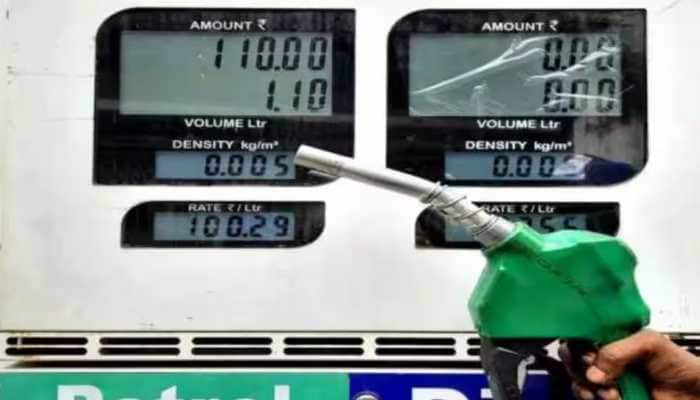Five oxygen cylinders daily? Delhi-NCR stares at terribly toxic future
Health and environmental experts have repeatedly warned against alarmingly high levels of pollution in and around New Delhi. Most of them agree there is no concrete plan in place and none are expected either.
Trending Photos
) Representational image courtesy Pixabay
Representational image courtesy Pixabay New Delhi: Rising pollution levels in Delhi and in the extended National Capital Region (NCR) could soon see residents walking with oxygen cylinders on their backs, warn experts adding that a person would need at least five oxygen cylinders a day.
Rising pollution levels in Delhi have become the cause of several medical ailments, including premature birth, decrease in lung immunity, allergies or aggravation of existing allergies, strokes, heart and lung disease, cancer and other acute respiratory diseases.
The World Health Organisation (WHO) says 92 per cent of the world's population, including in India, lives in areas where air quality is below acceptable standards. It also says that about 88 per cent of premature deaths occur in low and middle-income countries where air pollution is high and escalating.
According to the web site delhiair.org, air pollution in Delhi-NCR occurs due to a complex mix of pollution from human activities such as vehicle emissions, industry, construction, residential fuel burning, dust and sea salt.Heavy concentration of particulate matter is greatly affected by meteorological conditions -in the winter, cool air causes"inversions" that stagnant the air and trap pollution close to the ground.
Also, air flow patterns from Afghanistan and Pakistan pick up emissions as they move over the densely urbanised regions of Punjab and Haryana. Farmers in these two states burn straw in their fields and this pulls pollution into Delhi and its surrounding neighbourhood. Pre-monsoon dust storms and city activities also play a role in escalating toxicity.
The web site further reveals that NCR generates 10,000 tons of municipal waste daily, much of which is eventually burned - adding particulate pollution to the air.
Galloping urbanisation brings massive construction projects to the area as well.
In addition, Delhi has over a crore vehicles on its roads.
ANI approached a couple of experts to get a better understanding of the causes behind this menace and on what steps are required to reduce it.
Anumita Roychowdhury, Executive Director (Research and Advocacy) and head of the air pollution and clean transportation programme at the Centre for Science and Environment (CSE) said, "The issue of dealing with and countering the problem of rising pollution is not as simplistic as it appears. Post-2009, we saw a slow-down in actions related to and around pollution. We were losing out on the gains made prior to 2009, and as a result, the scale of pollution again increased."
When asked for a comment on how pollution is impacting the lives of the homeless in NCR, especially those living on sidewalks and in the Trans-Yamuna area, Roychowdhury said, "This winter, an emergency, graded response action plan has been activated on the direction of the Supreme Court. What is desirable is a comprehensive action plan (and) additional measures that address issues like providing more affordable housing and rentable stock, ensure Euro-6 standards to reduce vehicular emissions, reduce movement of personal vehicles by increasing purchase cost and impose more taxes and put in place a parking policy for public areas, and introduce proper waste management."
Environmentalist Chandraveer Singh hwoever says that measures on the ground are insufficient. "The problem of air pollution is not new, it has been there for ages and we talk about it, express alarm about it, wrestle with it every year, and almost never come up with a well- considered strategy to minimize it, yet alone counter it," he said. "There is a need to generate awareness, improve coordination between civic bodies, the government and the people. We have a difficult task on our hands, and if we don`t take appropriate emergency steps, we are looking at a Delhi-NCR where people will be walking around with at least five oxygen cylinders on their backs in a couple of years."
On issues such as vehicle emissions, industrial pollution, construction, residential fuel burning and dust, Chandraveer categorically blamed the government for non-compliance with recent orders of the National Green Tribunal (NGT), and added that there is no infrastructure in place at the state or central level to ensure corrective action. Going a step further, he said that by and large, the administration is "clueless" on the counter-pollution narrative. "It is important for states to coordinate more effectively and efficiently with each other. All stakeholders, including the Centre, have a role to play. It is up to them to bell the cat of pollution."
On Friday, the Union Environment Ministry granted a week`s time to various agencies to respond on whether deadlines listed in a mega plan to clean Delhi`s air by a Supreme Court-monitored panel suits them. The Environment Pollution (Prevention and Control) Authority (EPCA) has come out with several recommendations in the `Comprehensive Action Plan for Air Pollution`, which was submitted in the Supreme Court last month.
"The plan is final. It will not be reopened. The meeting was fruitful and we are hoping the ministry notifies it soon," EPCA member and CSE Director General Sunita Narain had said on Friday.
The plan focuses on 14 key pollution sources, as identified by an IIT-Kanpur study, and lists a series of short, medium and long-term measures, unlike the Graded Response Action Plan (GRAP) which focuses on tackling only emergency levels of pollution. The EPCA has set February 2018 as the deadline for implementation of a parking policy in the city and tasked municipal agencies, Delhi Traffic Police and the Transport department with implementing it.
It has also said that the National Thermal Power Corporation (NTPC) and the Power Grid Corporation (PGC) have to ensure that the coal-based Badarpur thermal power plant shuts down permanently by the middle of 2018.
The Graded Response Action Plan for Delhi and NCR announced earlier this year comprises of several measures. The nature, scope and rigour of these measures to be taken is linked to levels of pollution ranging from severe + or emergency, severe, very poor, moderate to poor andmoderate, after due consideration by authorities concerned. The actions are to be implemented in the entire NCR.
Stay informed on all the latest news, real-time breaking news updates, and follow all the important headlines in india news and world News on Zee News.
Live Tv







)
)
)
)
)
)
)
)
)
)
